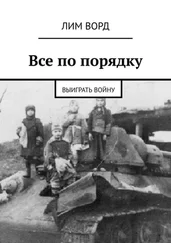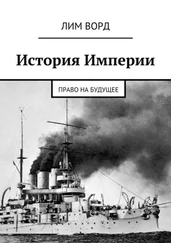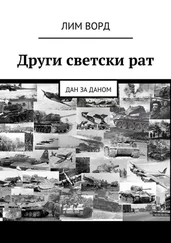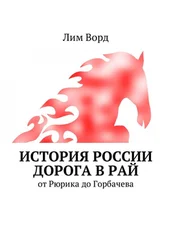After the end of the Russo-Turkish war in January 1812, Persia tends to sign a peace treaty, but Napoleon’s invasion of Russia adds extra weight to the war party in the Shah’s yard. South Azebaryan becomes the place of formation of the 30-thousand army of invasion of Georgia. Further, on February 1, 1812, the 18,000-strong corps of the Persians, under the command of British officers, manages to encircle one of the Russian battalions to surrender, but this ends their fortune. A series of fierce battles ends with the capture of Lankaran (now belonging to Azerbaijan), a fortress built by British engineers. The five-day bombardment does not bring any special damage to the fortification. At dawn on January 1, 1813, a frontal assault is carried out: 1800 Russian huntsmen against 4000 defenders of the fortress. The rows of assault columns are thinning out, but a few grenadiers climb onto the wall, capture an enemy cannon, unfold it and open fire with a grapeshot, supporting the attack. In battle, 350 soldiers and officers are killed, as well as almost all defenders of the fortress. Among the trophies – 8 English guns.
October 24, 1813, the Gulustan peace treaty is signed in Karabakh, recognizing all the acquisitions of the Empire, except for the territory of Eastern Armenia – which is returning to Persia. The peoples of the Caucasus and Transcaucasia get rid of the threat of invasion by Persia and Turkey, but the constant friction on the racial and religious grounds in this region become some of the factors of the instability of the whole of Russia.
The third coalition against Napoleon and his allies – Spain, Bavaria, Italy, arises after the signing of the St. Petersburg Union Treaty by England and Russia (April 11, 1805). Later Austria, Sweden and Portugal join it.
Bonaparte is not helped even by the fact that he himself, in effect, becomes a monarch: on December 1, 1804, according to the results of a plebiscite poll among his people, with 0.07% of the votes «against» is proclaimed emperor. Russian and French rulers exchange insults. Alexander the First, protesting against the shooting, accused of conspiracy, the Duke of the neutral Baden Margrave, calls the French government a «den of robbers», Napoleon in response hints at Alexander’s participation in the overthrow and murder of his own father.
The UK is not fighting as much as it pays: 1 million 250 thousand pounds sterling for every 100,000 soldiers of the coalition each year. This is about 80 grams of gold, or 900 modern pounds per ordinary soldier.
Bonaparte is preparing a landing across the English Channel, against his main opponent, and so to speak, the «customer»; 180 thousand people cavalry and infantry. They need to transport 1700 barges in the first wave of invasion, 590 in the second. The French-Spanish fleet is sent from the Mediterranean Sea to support the landing force and, at Cape Trafalgar (vicinity of the Strait of Gibraltar), meets with the English Navy. The forces are roughly the same, three dozen battleships, but the British gunners are more adept, and mostly the noble officer corps of the «Lady of the Seas» did not suffer at all from the work of the revolutionary guillotine. The avant-garde of the Franco-Spanish column, nine pennants, breaks through, the lagging ships suffer crushing losses of manpower in artillery duels (4,500 against 450 killed by the British), are boarded and captured. The British do not lose a single ship, but their brave Admiral Nelson dies – in a barrel of rum (according to legend, drunk by sailors during the journey), the body of the commander returns to his homeland.
Meanwhile, the Austrians are going to attack the possessions of Napoleon in Northern Italy and Bavaria. Upon learning of their plans, Napoleon is like Vienna. To help allies rush two parts of the Russian army (about 200 thousand people). Alexander supposes to give battle even before the approach of additional forces. At Austerlitz, on December 2, 1805, 60,000 Russians, 25,000 Austrians, 350 guns and 74,000 French (including their allies) gather, with 250 guns.
The left flank of the Russian-Austrian army is gaining initial success, gradually shifting from occupied heights and getting bogged down in battle, then the reserves of Napoleon come out of the forest shelters and rapidly break through the center of the Allied forces. Maneuverable, extremely effective French artillery appears exactly where it is needed, immediately opens fire, sows horror and death. The army of Franz and Alexander disintegrates, as well as their retinue; For a while the sobbing Russian emperor is accompanied only by a single hussar.
However, the army of Napoleon is no longer able to pursue the retreating enemy. The Russian army receives a harsh lesson, retains two-thirds of the original composition and half of the artillery. Emperor Franz the First states to Alexander that resistance is meaningless, and concludes with Napoleon a separate peace. The third anti-Napoleonic Coalition disintegrates.
In 1806, however, a new, Fourth coalition – Russia, Great Britain, Prussia, is being formed. Napoleon breaks the Prussian army, enters Berlin. Further hostilities are taking place in Poland and East Prussia. The French emperor wants to impose the decisive battle of the Russian army, acting together with the surviving German troops (about 14% of the total). Occurring in the course of six months, three clashes of the winners do not reveal. The general battle takes place in January 1807 under the Prussian city of Preysish-Eylau (now Bagrationovsk). Beforehand, the armies maneuver for a long time, which, in conditions of severe winter and insufficient supply, leads to significant, up to 35% non-combat losses. In the end, on February 8, the Russian army in 67 thousand people, with 400 guns, leaving the city to the enemy, is built in two lines, on the frontline 4, 5 kilometers.
Napoleon has 64 thousand soldiers and 300 guns. There is a massive mutual bombardment. Some initial advantage among the French: their troops are covered with walls of houses, the gunners of Napoleon shoot more often and more accurately. Marshal Davout’s squad attacks the left flank of the Russian army, commander Bennigsen throws reinforcements to the battlefield, weakening the middle of the system. Noticing this, Napoleon gives an order to General Augerot’s corps (15,000 people) to strike at the center. The offensive is conducted on a snow-covered plain. The storm is rising, the disoriented French units are deflected to the left, and suddenly they find out, 120 meters away, the main battery of the Russians. Immediately 72 guns open fire, already without a miss, knocking out entire rows of soldiers. Within a few minutes, 5,200 enemy combatants are killed or injured. Bennigsen throws the cavalry and infantry into battle, in turn attacking the center of the army of the French.
The battle is already at the very stake of Napoleon (the emperor himself is watching the battle from the bell tower), but the 9-thousandth cavalry of Murat comes to her rescue, correcting the situation, saving his emperor. There is another desperate attack by a 4,000-strong detachment of Russian grenadiers, then the opponents retreat to their original positions. The artillery duel continues.
At noon, the fresh parts of Marshal Davout join the battle, they again press the left flank of the Russian army. 36 mobile (according to the French model, on horse traction, with the initial stock of charges) cannons are coming to their aid, 3 horse-artillery companies of General Ermolov, and also, the Prussian corps, which lasted for almost 100 kilometers a day. At nine o’clock the cannonade subsides, the opponents do not want to continue the battle and count the losses. On the Russian side of the killed and wounded – 26 thousand, Prussian – 800, the French – 24 thousand people. The Russian units retire to Koenigsberg, leaving the battlefield, corpses and broken weapons to Napoleon, but there are no winners and losers here.
Читать дальше












